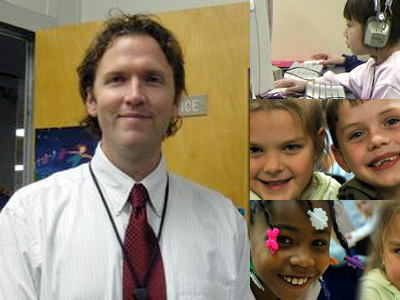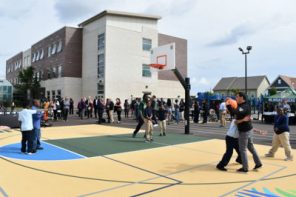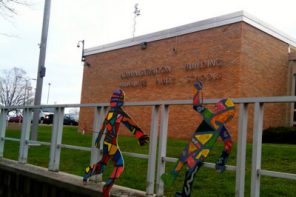Of course, as a Milwaukee resident and taxpayer — and the dad of an MPS student, and a prospective one — the stress I feel over the current budget battle in Madison is focused on how the decimation of public school funding will affect my children, the children of my friends, neighbors and co-workers and all of the kids in the city.
But, communicating with Curt Rees — a principal in Onalaska, out near LaCrosse — is a good reminder that public schools across the state will feel the same pain. While the cuts affecting MPS are astronomical in comparison, that’s only because we have such a large district. In terms of percentage, MPS is not facing the largest cut.
In fact, according to a DPI spreadsheet that hypothesizes how the proposed budget would have affected districts this school year — had it been in effect — Onalaska would have seen cut of 10.3 percent. MPS would have lost 8 percent.
“Frustrated would be the first feeling that comes to mind in terms of the state budget,” Rees wrote to me in an email.
“Expectations continue to go up in terms of student achievement, but our resources are dwindling. I’ve been at my school (Northern Hills Elementary, which scores 8 out of 10 on GreatSchools.org) for 7 years and my site budget — which takes care of supplies, copy machine, professional development, building repairs, etc. — has never seen an increase. Our budget had been frozen for 6 years and then took a 10 percent cut last year to help make ends meet for the district.”
Rees says he worries most about what the cuts mean for the future of the institution of free public education for all American children.
“If people are allowed to use vouchers to go to any school they want, what will that do for the kids who need the most help, but don’t have knowledgable and resourceful parents to advocate for them? Maybe public schools will just be the place for the ‘leftover’ kids. I can’t ever see that as being a benefit for any part of society.
“I love reading about Thomas Jefferson’s push for a system of public education,” Rees continues. “He did so because he wanted every U.S. citizen to be skilled enough to care for themselves and to be learned enough to make good decisions while being a part of a democracy. Without a strong public ed system, will our citizens be able to do either of these?”
Onalaska School District has a three-year average enrollment of 2,861 and has a base revenue of $9.473 per student. Comparable numbers for MPS are 85,455 and $10,104. There are three elementary schools, one middle school, one high school and an early education center in the Onalaska district. At the start of this school year, MPS had 184 schools, including 118 elementary schools, 8 middle schools, 40 high schools and 18 schools with combined grades.
Luckily for the district, Rees says, Onalaska is bolstered by a very supportive community.
“Our parents are great about helping their kids be successful in school. Local businesses and groups are also great supporters of our schools. Our community passed a funding referendum (about five years ago) to allow us to remodel our oldest elementary school and then take care of several other capital projects in the district — HVAC, safety projects, parking lot repaving, etc.
“We also just passed a referendum on Feb. 15 to give us operating money to maintain the programs and people we already have in place, which have been very successful. But it seems like the state has not followed through on their end of the deal. We had the QEO (note: the QEO limits how much schools can raise as a means to limit spending) in place for 17 years to keep employee compensation down and the state was supposed to provide 2/3 of our funding. Compensation certainly stayed down, but the state funding kept shrinking and shrinking and looks to be outright chopped for this next budget cycle.”
So, even while Onalaska has a supportive community and has apparently followed the revenue rules, times have grown tighter and tighter due to state cuts. This latest round of proposed cuts puts further stress on the district’s finances. Rees says the big hurt will come the year after next in Onalaska.
According to the DPI, Onalaska faces a $2.4 million cut from the state in 2011-12 and $3.2 million the following year. The numbers are $71 million and $95 million in MPS.
“Because of our successful referendum, we’ll be OK this coming year in maintaining the status quo, but we had hoped that the state funding would be there so our local money could allow us to do another school remodel and allow us to take care of other capital needs that come up every 5-ish years.
“We’ve held this thing together with spit and duct tape for several years, but how long can that last? A school’s biggest assets are its teachers and staff. When the money is gone, positions will be eliminated, class sizes go up for kids, and then there are fewer class choices for them.”
Onalaska, we feel your pain.


 i evaluate to yes even if there's no image
i evaluate to yes even if there's no image  i evaluate to yes even if there's no image
i evaluate to yes even if there's no image  i evaluate to yes even if there's no image
i evaluate to yes even if there's no image  i evaluate to yes even if there's no image
i evaluate to yes even if there's no image  i evaluate to yes even if there's no image
i evaluate to yes even if there's no image  i evaluate to yes even if there's no image
i evaluate to yes even if there's no image 